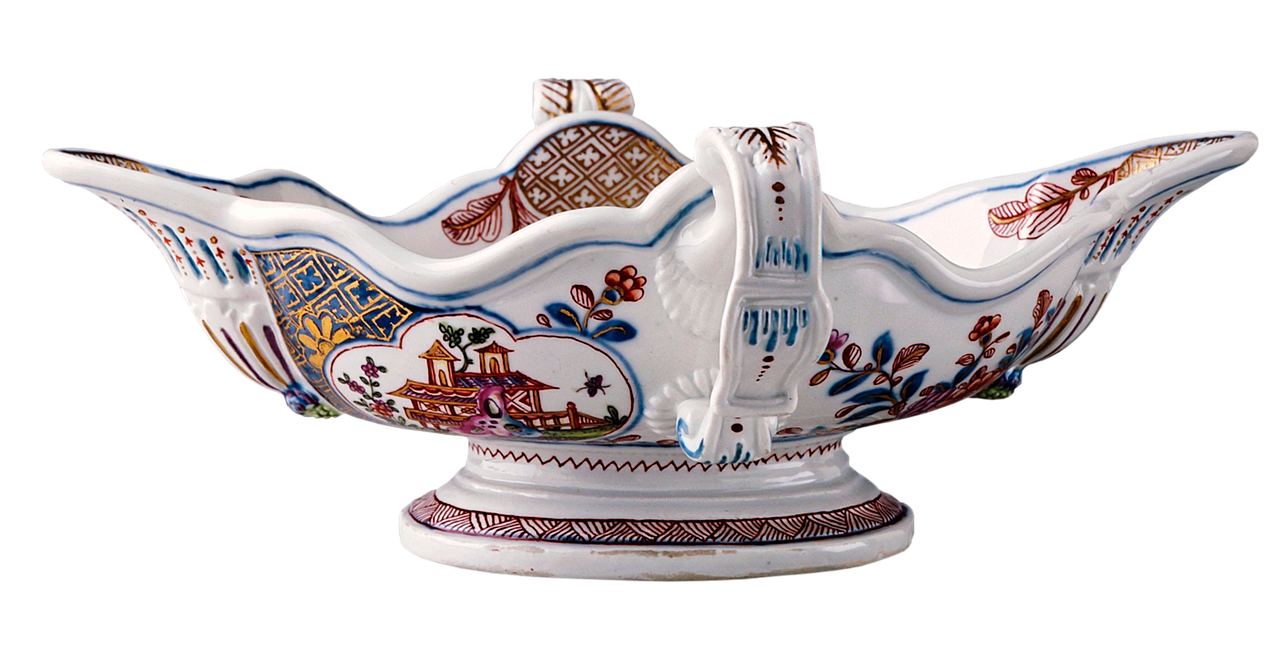Welcome to our blog post where we break down the myths and answer the burning question: is Pyrex lead free? With growing concerns about the safety of our cookware and drinkware, it’s important to know the facts. In this post, we’ll dive deep into the world of Pyrex and explore its composition, safety standards, and whether or not it contains lead.
As vintage Pyrex dishes continue to gain popularity, questions about lead content and safety arise. We’ll address these concerns, providing you with the information you need to make informed decisions about the glassware you use in your kitchen. So, if you’ve ever wondered if clear glass or old Pyrex bowls are safe for baking and drinking, you’ve come to the right place! Let’s separate fact from fiction and put your mind at ease.
Stay tuned to uncover the truth about Pyrex, its lead content, and the safety of your beloved vintage pieces. Whether you’re a cooking enthusiast, a collector, or simply curious, this blog post will equip you with valuable knowledge about Pyrex and ensure you’re making the best choices for your culinary adventures.
Is Pyrex Lead Free
If you’re a fan of cooking (and eating, of course), chances are you’ve come across Pyrex at some point. It’s a popular brand known for its durable and versatile kitchenware, ranging from baking dishes to mixing bowls. But when it comes to safety, one question lingers: is Pyrex lead-free?
The Lowdown on Lead
Lead is a toxic heavy metal that, when ingested or inhaled, can have harmful effects on the body. Even small amounts of lead exposure can pose serious health risks, especially for young children and pregnant women. So, it’s no wonder that people are concerned about the presence of lead in their kitchenware.
Getting Clear on Pyrex
Thankfully, Pyrex has taken measures to address these concerns. Historically, Pyrex used to be made of borosilicate glass, which is known for its superior heat resistance and durability. However, in recent years, the composition of Pyrex has changed.
New Composition, Same Quality
In 1998, Pyrex introduced a new line of products made from soda-lime glass, a type of glass commonly used in the industry. While the transition sparked some worries among consumers, Pyrex assured its customers that their products are still safe to use.
The Road to Lead-Free
Pyrex’s switch to soda-lime glass was mainly due to the demand for a more affordable and accessible alternative to borosilicate glass. This change involved a shift in manufacturing practices and, most importantly, a commitment to ensuring lead-free products.
Safety First
Pyrex understands the importance of safety in the kitchen, which is why they have implemented strict quality control measures to ensure that their products meet safety standards. So, you can rest assured that the Pyrex items you have in your kitchen are lead-free.
How to Be Certain
If you want to be absolutely certain that your Pyrex product is lead-free, you can look for the “Lead-Free” label on the packaging or the product itself. Pyrex has made it easier for consumers to identify their lead-free products, giving you peace of mind while you prepare your favorite dishes.
Cooking with Confidence
With Pyrex, you don’t have to worry about lead leaching into your food. Cook and bake to your heart’s content, knowing that your Pyrex kitchenware is designed with both your cooking needs and your safety in mind.
In this age of increased awareness about the potential dangers of lead exposure, it’s crucial to choose kitchenware that prioritizes safety. Pyrex, with its commitment to providing lead-free products, is a reliable choice for any home cook. So, go ahead and whip up those delicious meals without a worry in the world – Pyrex has got you covered!
FAQ: Is Pyrex Lead Free
Welcome to our FAQ section, where we’ll address all your burning questions about Pyrex and its lead-free properties. Let’s dive right in and put those concerns to rest!
Is Clear Glass Lead Free
Absolutely! Clear glass, including Pyrex, is generally lead-free. This means you can enjoy your favorite beverages or meals without worrying about any lead contamination. So go ahead and sip that refreshing lemonade or savor that delicious lasagna with peace of mind!
What is the Most Valuable Pyrex Pattern
Ah, the age-old question! When it comes to valuable Pyrex patterns, it’s like a treasure hunt in your very own kitchen. The most sought-after pattern is the elusive Lucky in Love, which can fetch a pretty penny for avid collectors. So keep an eye out for this rare gem during your thrift store expeditions!
How Do You Know if There is Lead in Your Dishes
Testing for lead in your dishes is crucial for your safety, so here are a few methods to put your detective skills to good use. Use lead test kits, which are readily available online or at your local hardware store. Another option is to consult a professional laboratory for a thorough analysis. Remember, it’s better to be safe than sorry!
Is All Glass Safe to Drink From
While most glassware is safe for sipping, it’s essential to exercise caution when it comes to antique or handcrafted glassware. Always double-check for potential lead content, especially if you stumble upon a stunning vintage piece at a flea market. When in doubt, opt for modern, lead-free glassware to quench your thirst with peace of mind.
Is Pyrex Glass Safe
Absolutely! Pyrex is renowned for its exceptional safety standards. This borosilicate glass marvel has been a staple in kitchens worldwide for its durability and resistance to thermal shock. So whether you’re roasting a mouthwatering chicken or stirring up a delightful custard, rest assured that Pyrex has got your back, and your food, covered!
Which Pyrex Dishes Have Lead
Rest easy, my friend, because Pyrex dishes are generally lead-free. However, it’s important to note that certain vintage Pyrex pieces may contain traces of lead in their decorative designs. So keep your eyes on the prize and avoid those specific patterns if you have concerns about lead exposure.
Does Clear Glass Have Lead
Fear not! Clear glass, including Pyrex, is typically free of lead. So whether you’re marveling at the transparency of your favorite glassware or admiring the gorgeous presentation of your culinary creations, you can enjoy the beauty of clear glass without a hint of worry.
Can You Bake in Vintage Pyrex
Ah, vintage Pyrex, a delightful blast from the past! While baking in vintage Pyrex is generally safe, it’s essential to exercise caution, especially with older pieces. Inspect your vintage treasures for any cracks, chips, or discoloration before popping them into the oven. It’s always better to be safe and prevent kitchen mishaps!
Is Pyrex Non-Toxic
You bet it is! Pyrex is widely recognized for its non-toxic nature, making it a top choice for cooking and baking enthusiasts. Bid farewell to any worries about harmful substances leaching into your delicious creations. So whip up that scrumptious cake or sizzle that perfectly seasoned steak with complete peace of mind!
What is Special About Pyrex Glass
Ah, Pyrex, the unsung hero of the kitchen! What sets Pyrex apart is its remarkable ability to withstand extreme temperature changes without shattering into a million sad little pieces. This makes it ideal for moving effortlessly from freezer to oven or from refrigerator to microwave. It’s like having a kitchen superhero keeping your culinary adventures free from glassware disasters!
What is the Difference Between Glass and Pyrex
Here’s the scoop! Pyrex is a specific type of glass known as borosilicate glass. The key difference is in the composition. Pyrex contains boron, making it more resistant to thermal shock than regular glass. So while glass might protest and shatter under extreme temperature changes, Pyrex stands strong like a culinary guardian, ensuring your cooking escapades remain intact!
Is Scratched Pyrex Safe to Use
Don’t fret! Minor scratches on your Pyrex dishes are generally harmless. However, if you notice significant damage or deep scratches, it’s best to retire those well-loved, battle-worn warriors to prevent any potential contamination. Take care of your Pyrex, and it will take care of your culinary adventures for years to come!
Do Ball Mason Jars Contain Lead
Rest assured, because Ball Mason jars are lead-free! These iconic jars have been trusted by canning enthusiasts for decades, with a solid reputation for safety and preservation excellence. So go ahead and channel your inner homesteader, can those fresh fruits, and create beautiful homemade gifts without any lead-related worries!
Does Pyrex Have Lead in It
Generally, Pyrex does not contain lead. However, we must caution you that certain vintage Pyrex patterns may have decorative elements that contain trace amounts of lead. So, to be on the safe side, keep an eye on those timeless designs, ensuring that lead exposure doesn’t sneak onto your dining table.
Why is Vintage Pyrex So Popular
Ah, the allure of vintage Pyrex! Its charm lies in the nostalgia it brings, whisking us back to simpler times. Beyond that, its durable nature, vibrant patterns, and versatility make it a beloved collectible in kitchens around the world. So join the vintage Pyrex fan club and embark on an enchanting journey through the realms of retro-cooking!
Does Milk Glass Contain Lead
No need to cry over spilled milk because milk glass is generally lead-free! This lustrous glassware, with its milky-white appearance, has been a beloved favorite for generations. So display your prized milk glass collection and wow your guests with its timeless elegance, all without worrying about any unwelcome lead surprises!
Are Old Pyrex Bowls Worth Anything
You might have struck gold! Old Pyrex bowls can indeed hold considerable value, especially if you stumble upon sought-after vintage patterns or rare pieces. Keep an eye out for those hidden gems while rummaging through thrift stores or attending estate sales. Who knows, you might discover a treasure trove of Pyrex brilliance that will make your wallet smile!
Is Vintage Pyrex Dangerous
Fear not, vintage Pyrex is generally safe for use! As with any older glassware or cookware, exercising caution is key. Inspect your vintage Pyrex for any signs of damage or deterioration before embarking on culinary adventures. But once cleared for action, let those retro wonders whisk you away to a bygone era of delightful flavors and cherished memories!
How Do I Know if My Pyrex is Worth Money
Ah, the age-old question of Pyrex worthiness! If you suspect your Pyrex might be worth a pretty penny, there are a few telltale signs to look out for. Rare patterns, discontinued designs, unusual shapes, or limited editions are all potential indicators of a valuable Pyrex piece. So do your research, consult the experts, and who knows, you might be sitting on a small fortune!
Can Pyrex Go in the Oven at 400°F
Certainly! Pyrex is famous for its heat-resistance. You can confidently pop your Pyrex dishes into the oven, cranked up to 400°F or higher, without any worries of the glassware cracking or shattering. So crank up the heat, bring on the deliciousness, and let Pyrex handle the cooking heat waves like a true culinary champ!
How Can You Tell if Glass is Lead-Free
Detecting the lead content in glassware requires some sleuthing skills. One way to determine if glass is lead-free is by checking for any product labels or certifications. Additionally, reputable manufacturers often provide detailed information about their glassware’s lead-free properties. And remember, when in doubt, don’t hesitate to reach out to the manufacturer directly or consult a professional for expert advice!
That concludes our Pyrex-centric journey through the realm of lead-free glassware. We hope this FAQ has shed light on your inquiries and put any concerns to rest. So go forth, cook, bake, sip, and cherish your Pyrex collection with joy, knowing that it’s as safe as can be!
Stay glassy, my friends! 🍽️✨

